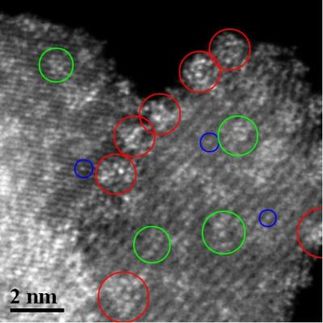Scientists at The University of Manchester have developed a new type of adhesive, which mimics the mechanism employed by geckos
Advertisement
Researchers within the newly opened Manchester Centre for Mesoscience and nanotechnology at the University have been working on the new adhesive since 2001, after learning the mechanism of gecko's climbing skills from biophysicists. Now they have been able to manufacture self-cleaning, re-attachable dry adhesives, and the research team believes it wont be long before "Spiderman" gloves become a reality particularly useful for rock climbers and window cleaners.
The new adhesive ("gecko tape") contains billions of tiny plastic fibres, less than a micrometer in diameter, which are similar to natural hairs covering the soles of geckos.
Dr Irina Grigorieva, Kostya Novoselov, a postdoctoral researcher, and EPSRC visiting fellow Sergey Dubonos, who micro fabricated the structures, worked on the project together with Professor Andre Geim, Director of the Centre for Mesoscience and Nanotechnology. Professor Geim commented: We have realised that our unique expertise and facilities at the Centre can immediately contribute to this research area, where only biologists and biophysicists could before.
"We have also considered producing a large amount of gecko tape - sufficient amounts to enable a student to hang out of a window of a tall building. However it would cost too much money, and would not benefit us scientifically, so we have limited our demonstration to the gecko toy".
Many academics and researchers have been working on the elusive "gecko tape", including Bob Full from Berkeley University. He commented: "Geim's development is very exciting, as uses for the tape are nearly unlimited. In addition to a general adhesive, it can be used to move computer chips in a vacuum, pick up small fibres, and design novel bandages. Its like Velcro without the need for an opposite!"
Manchester Centre for Mesoscience and Nanotechnology is specially designed for advanced multidisciplinary research such that researchers with little previous experience in nanotechnology could use it to join and collaborate with those already active and experienced in the subject, and provides state of the art facilities for electron beam lithography, optical and near field optical lithography, plasma processing, ultra-clean sputter deposition, AFM/MFM/STM and SEM microscopy.
The Manchester Centre for Mesoscience & Nanotechnology was opened by Lord Sainsbury in April 2003.

























































